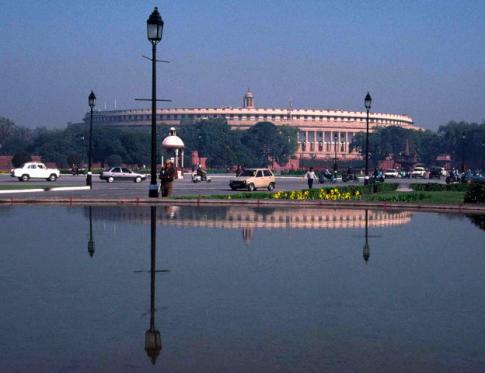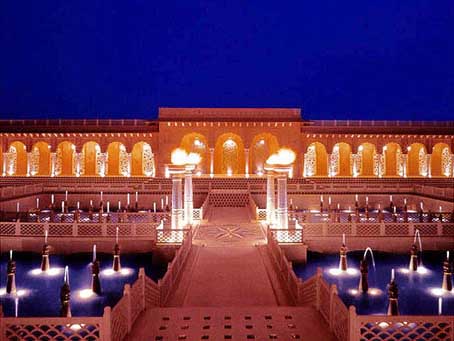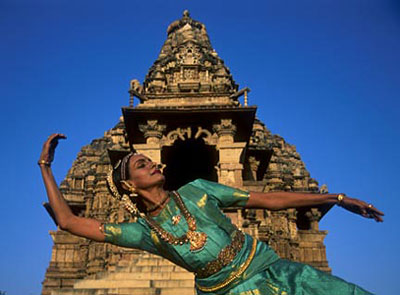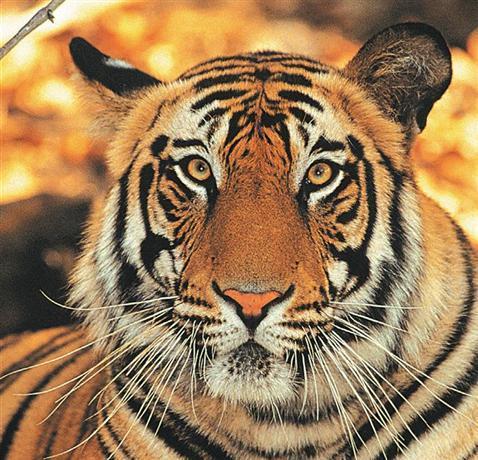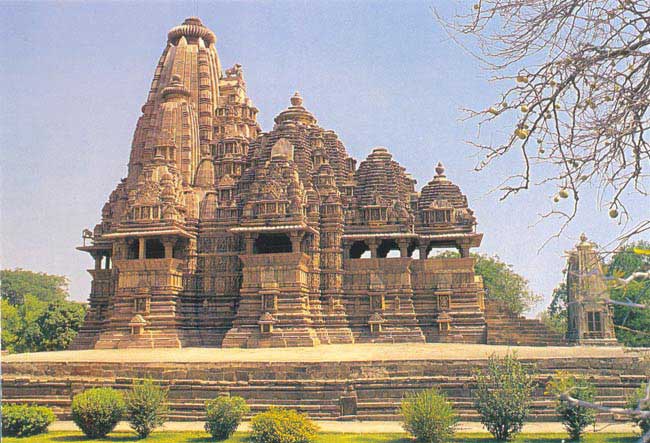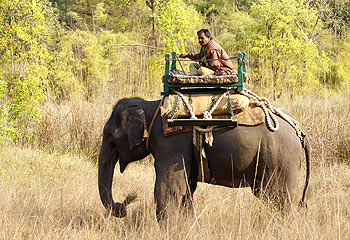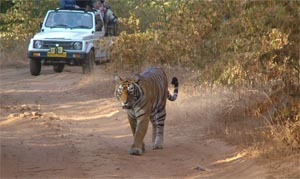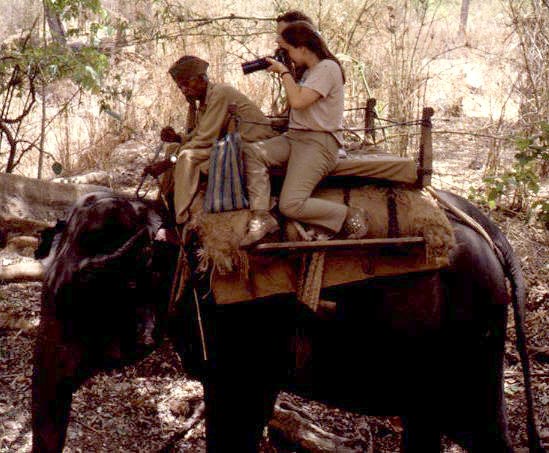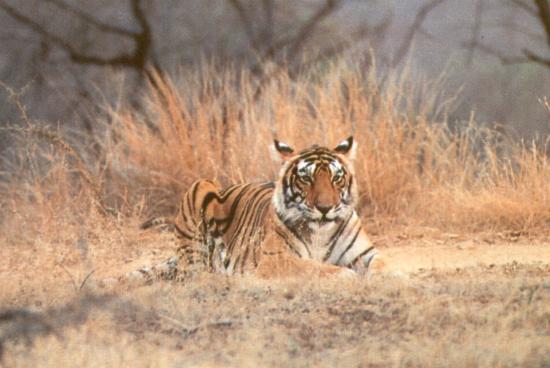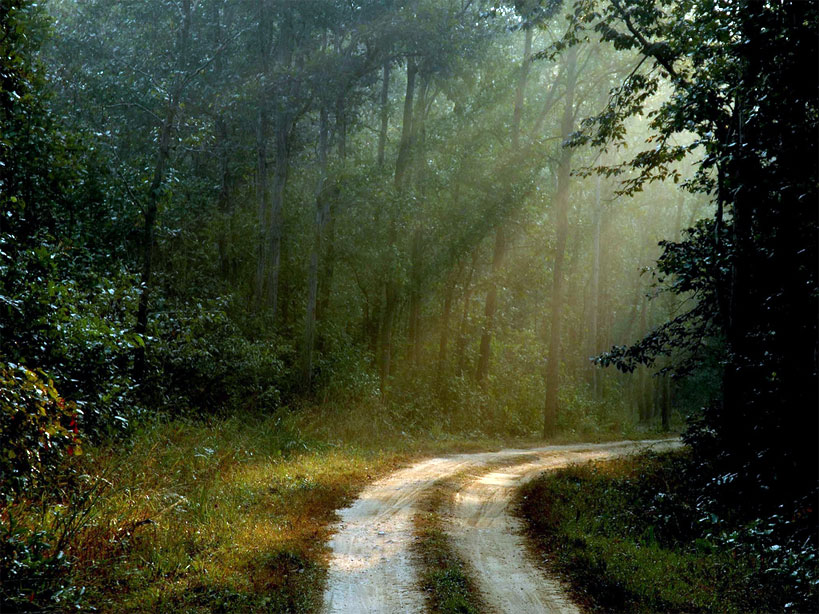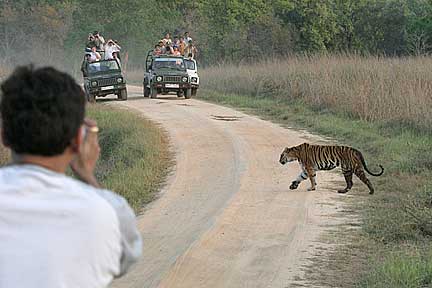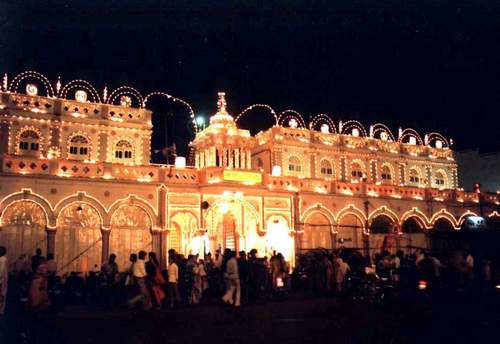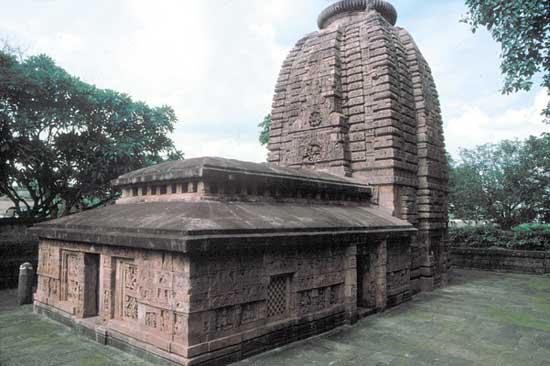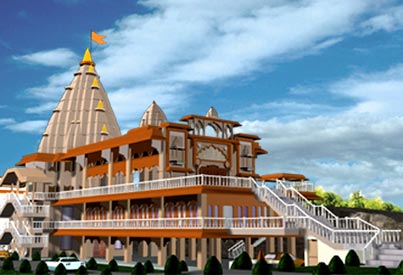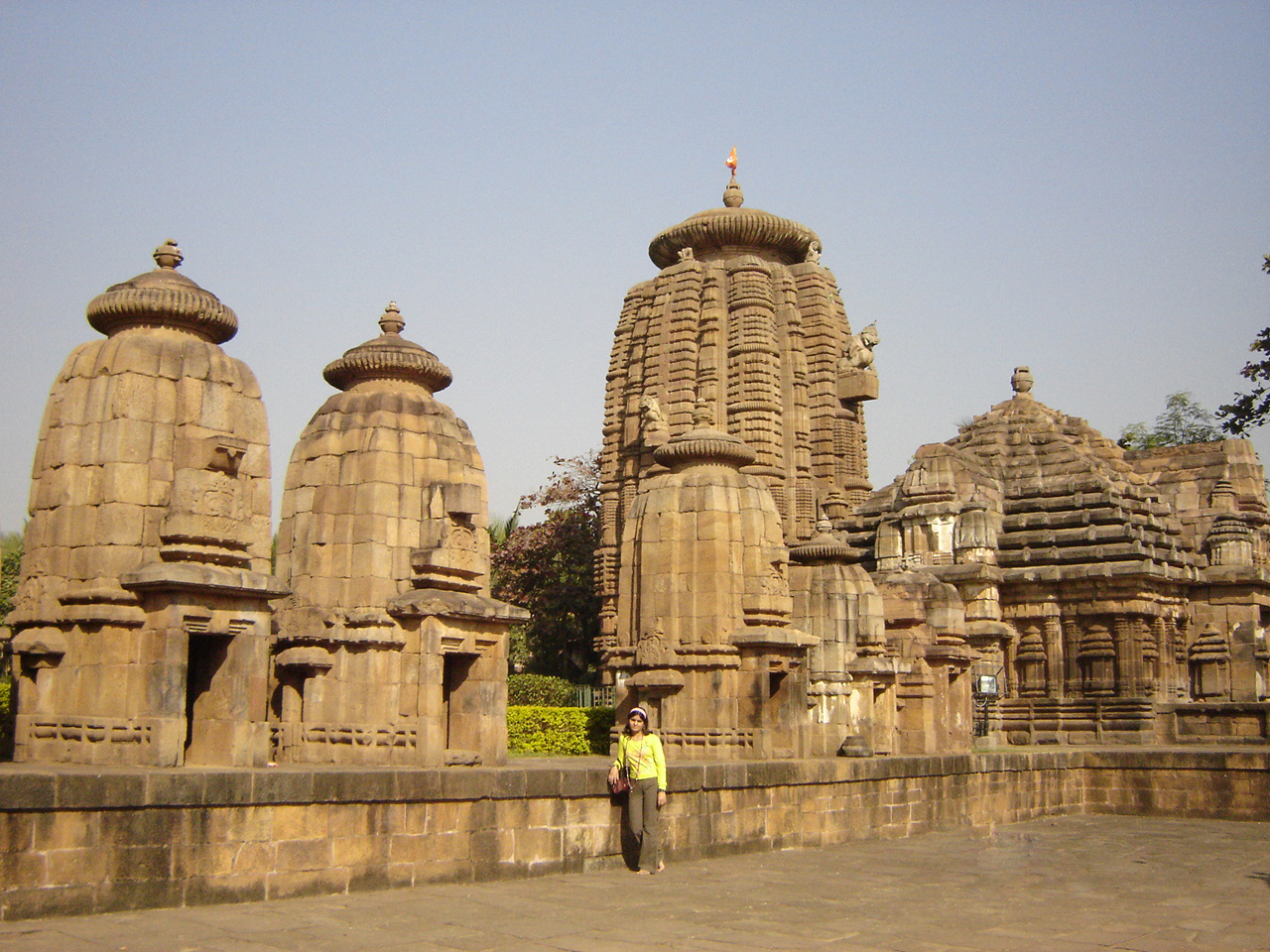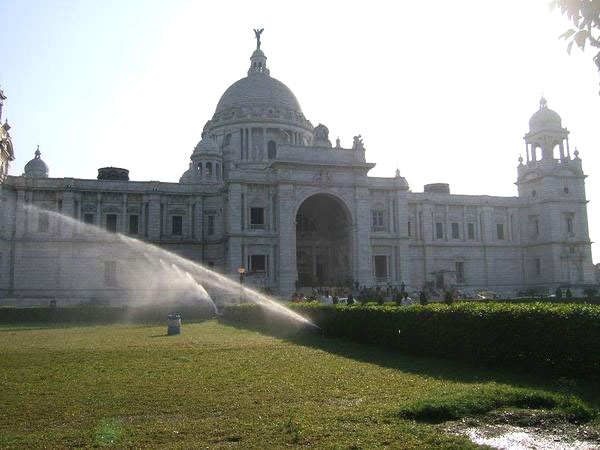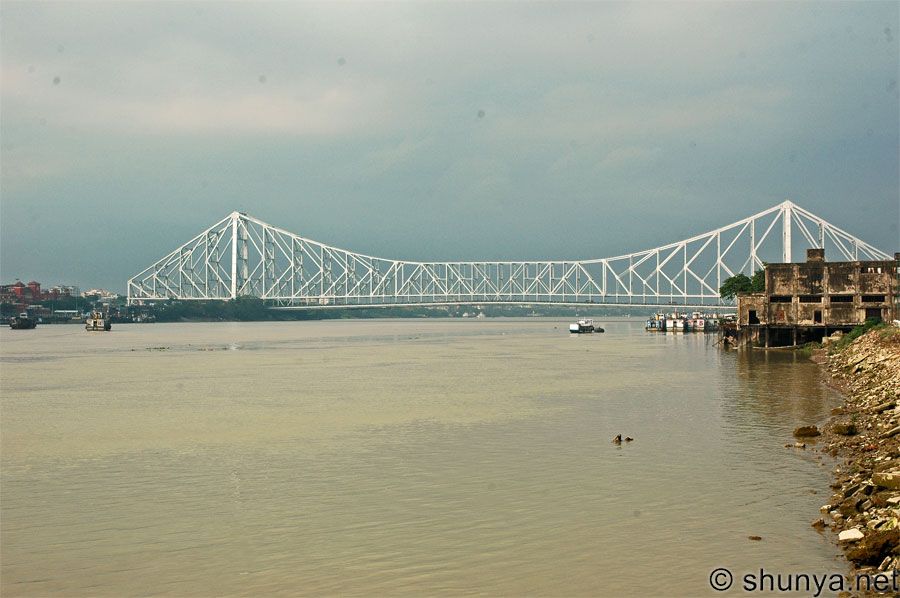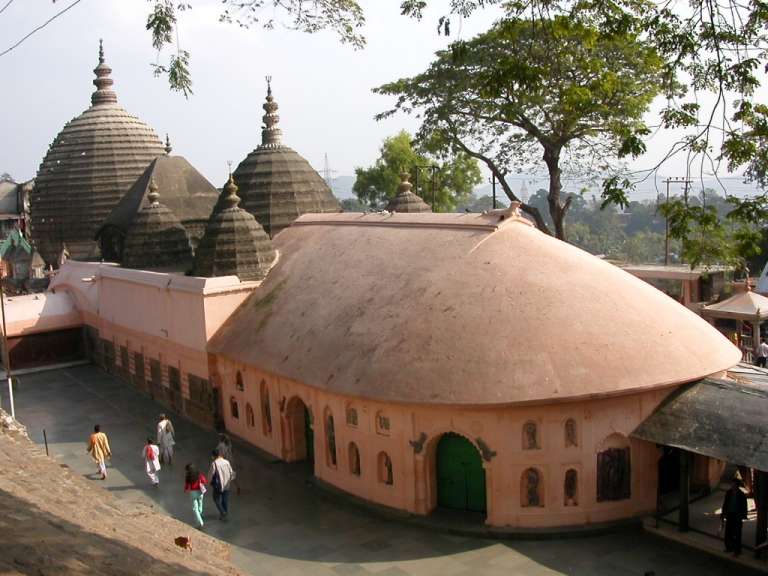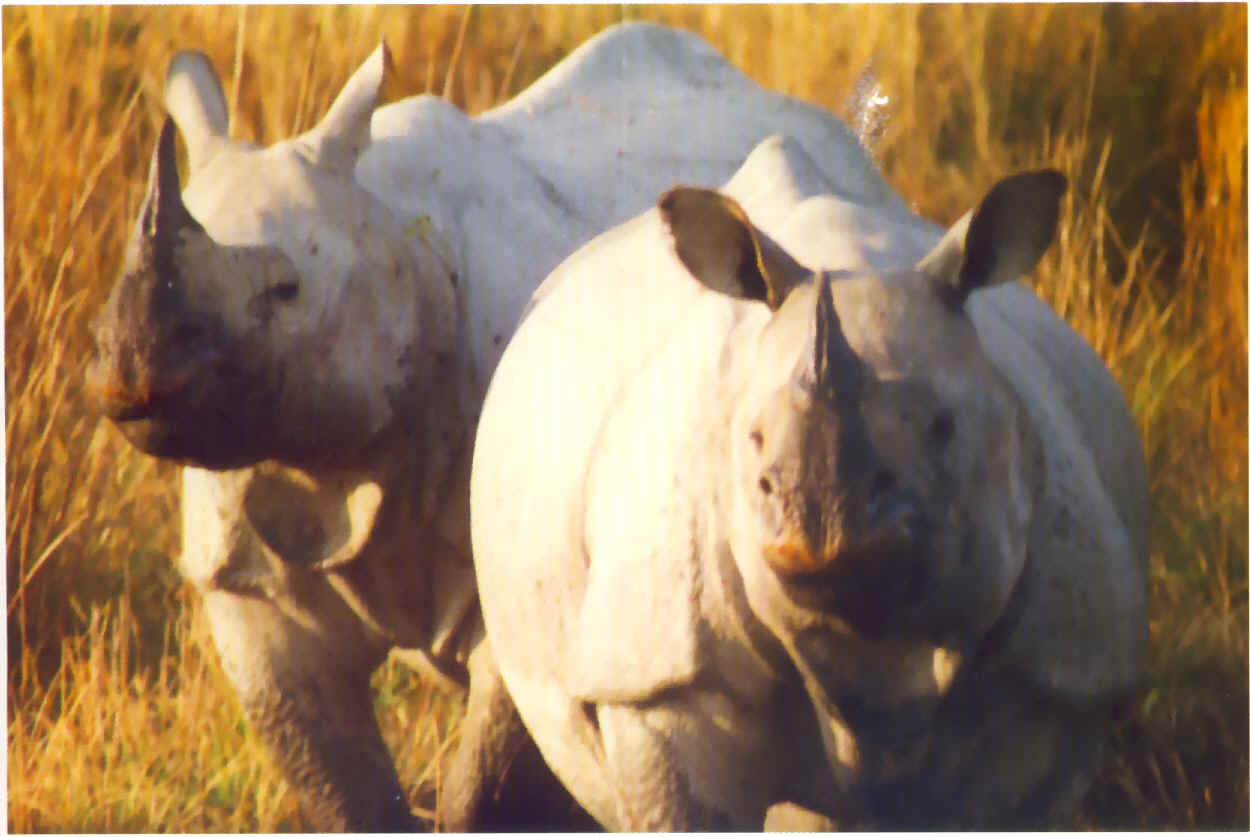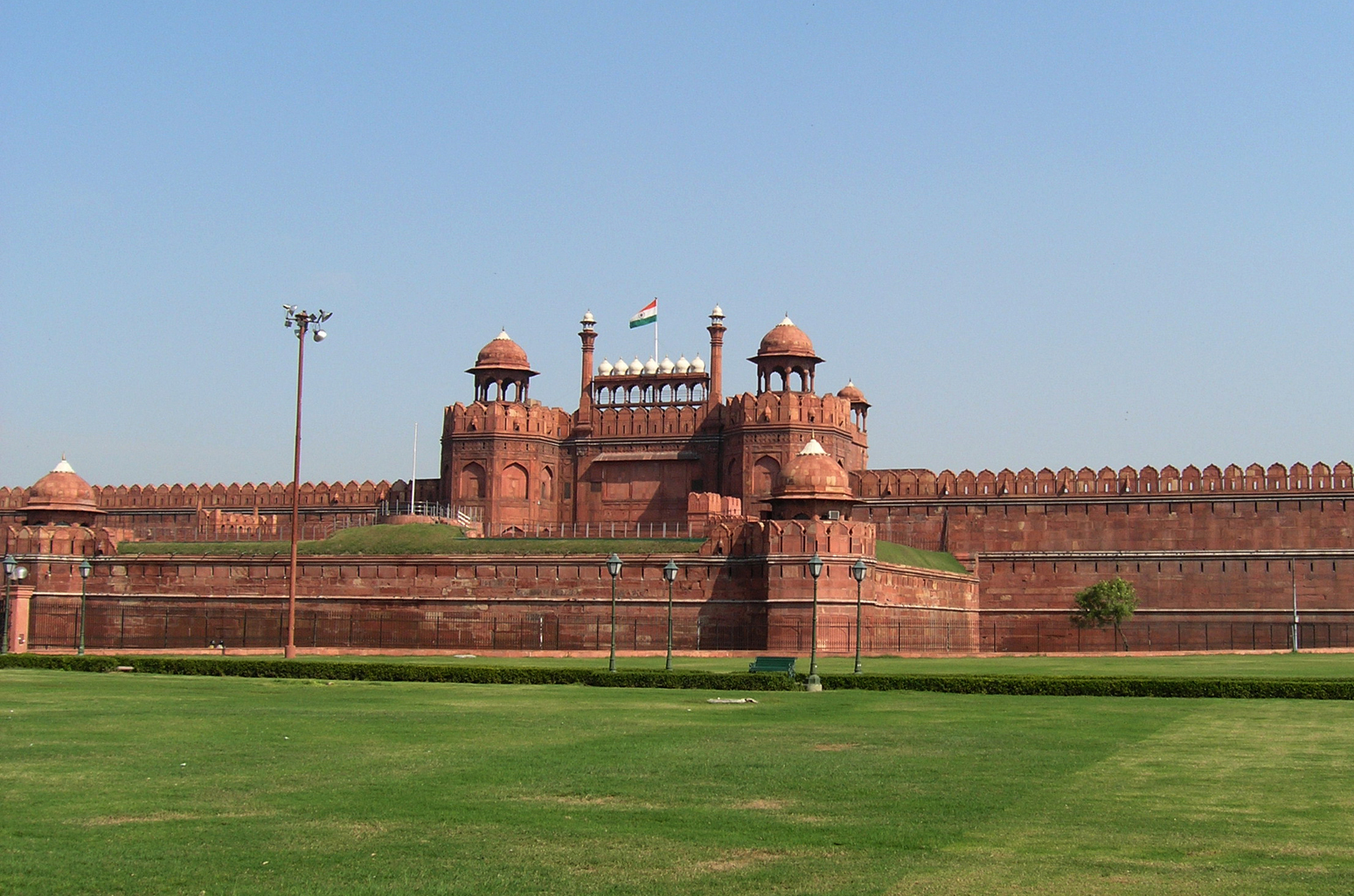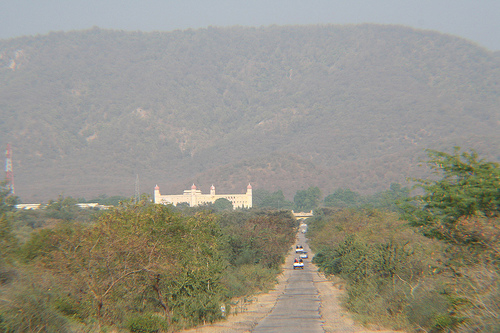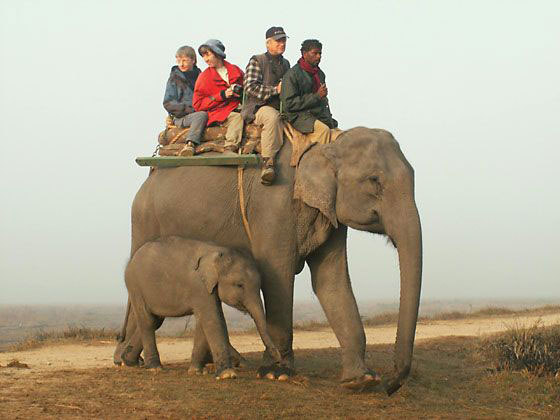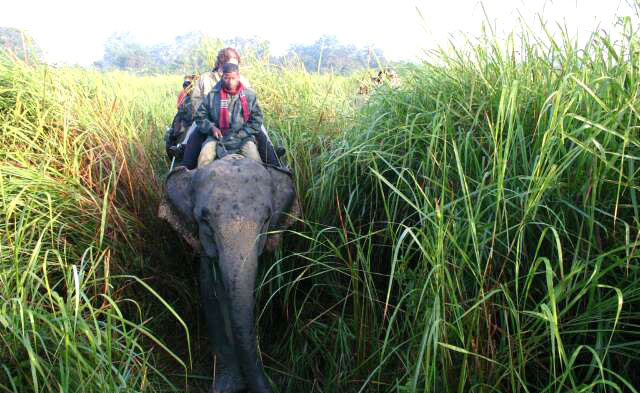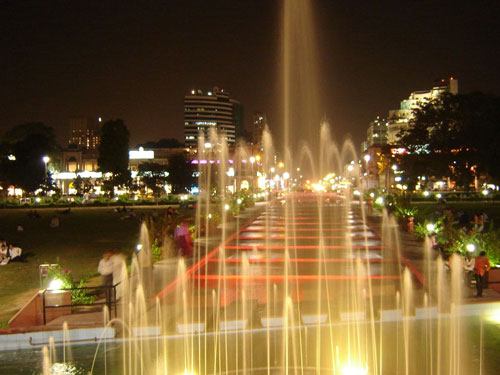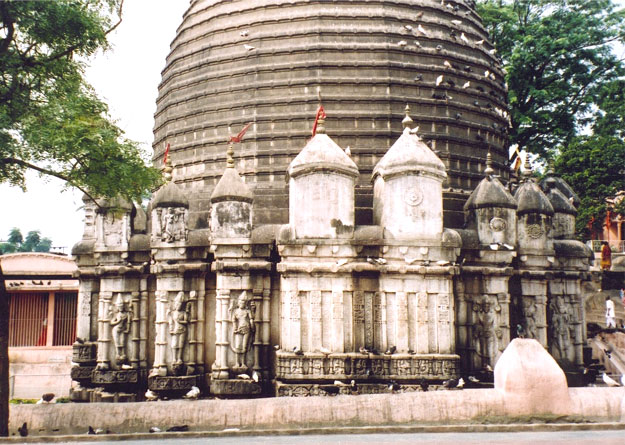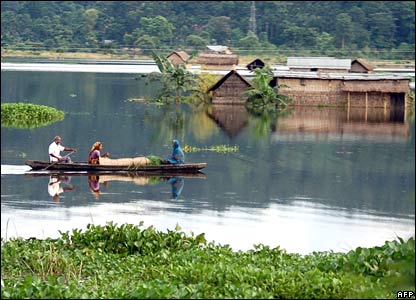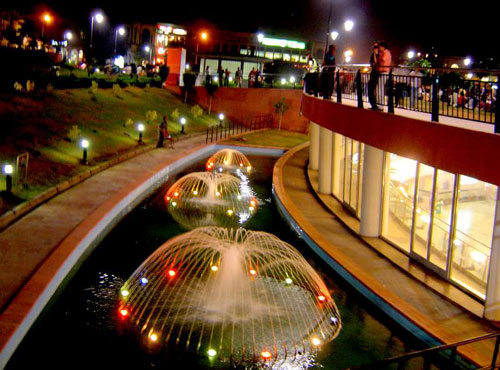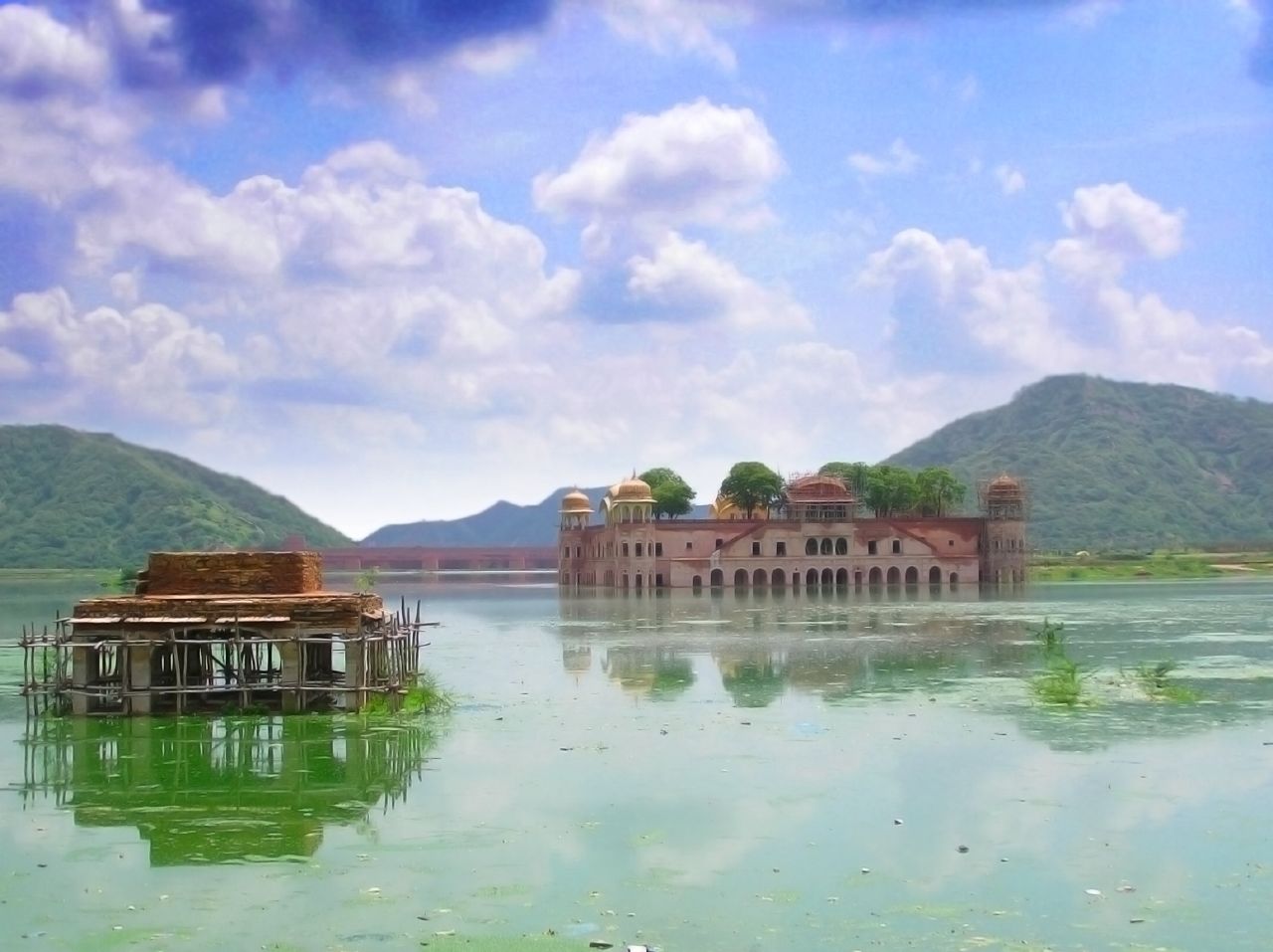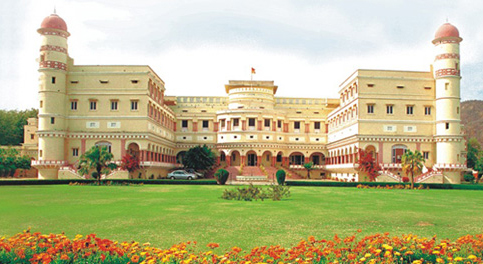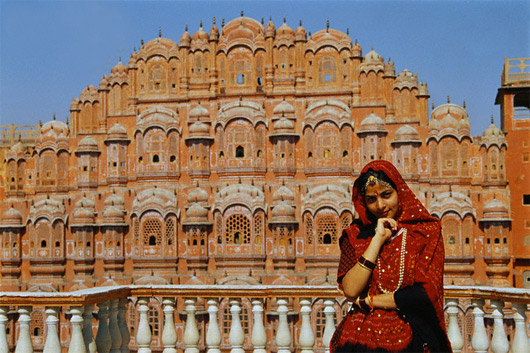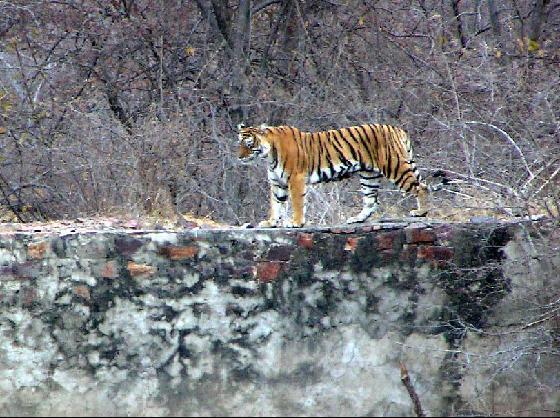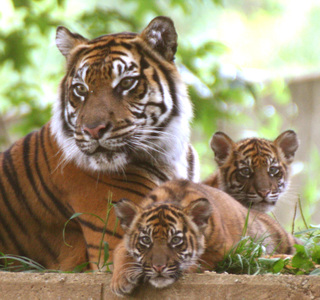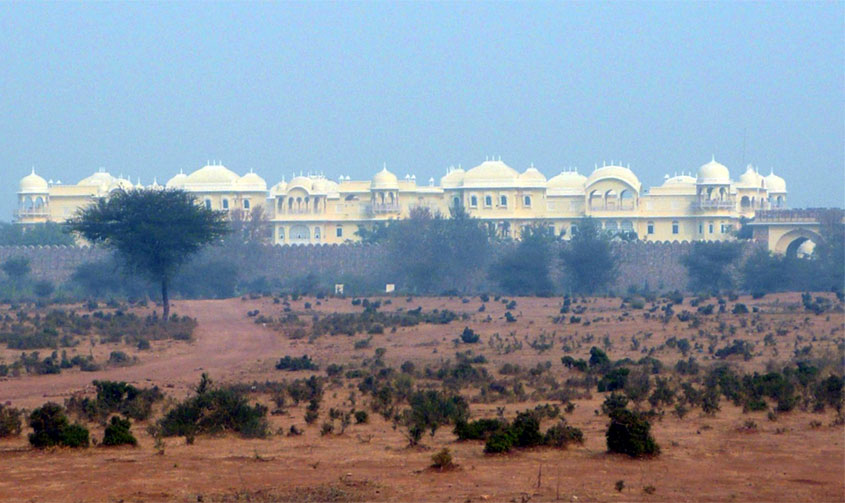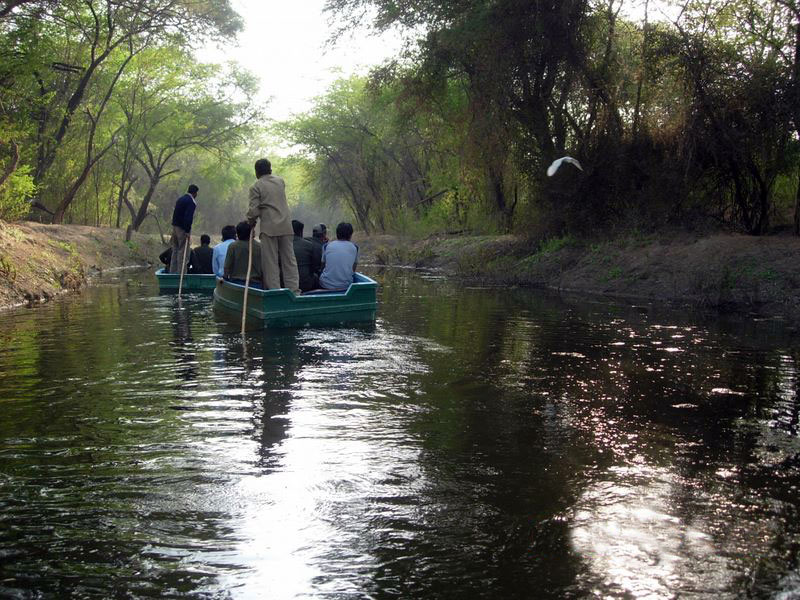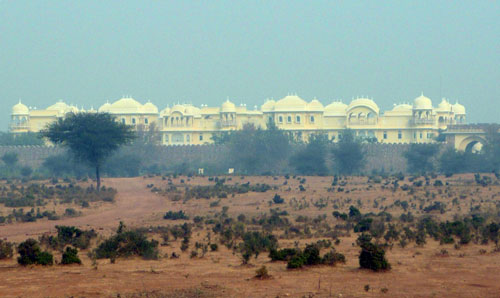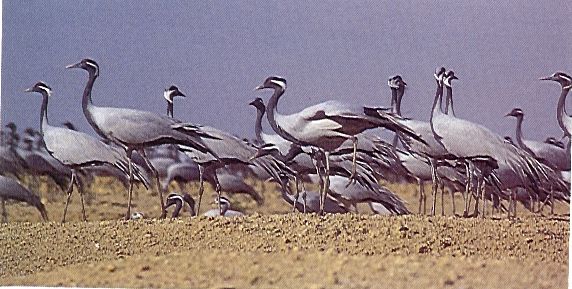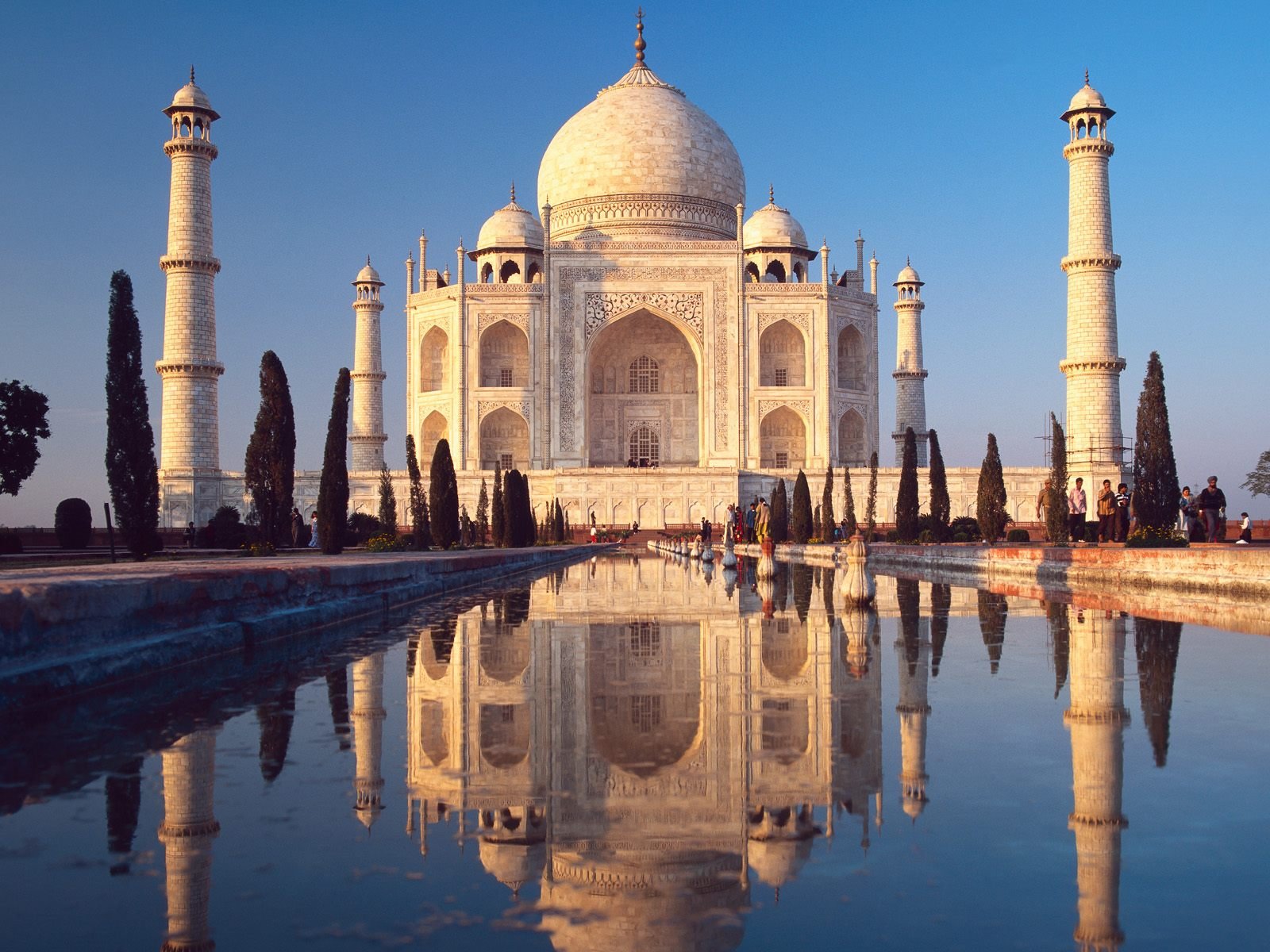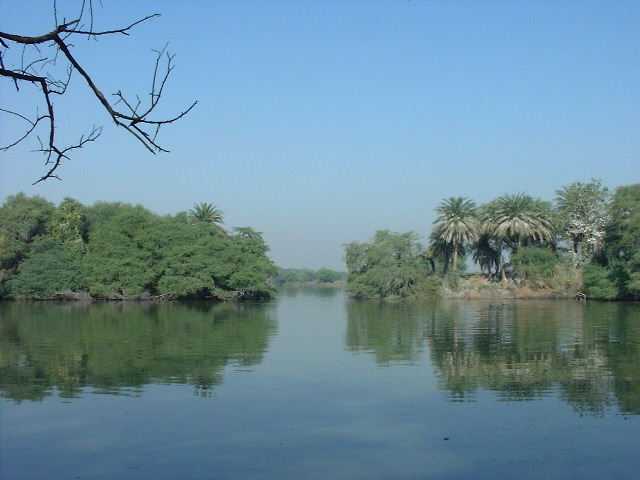Day 1: Delhi
 Arrive at Delhi.On arrival our representative will welcome and transfer to the hotel.Overnight stay at the hotel.
Arrive at Delhi.On arrival our representative will welcome and transfer to the hotel.Overnight stay at the hotel.
Day 2: Delhi - Sariska
 Morning after breakfast drive to Sariska Tiger Reserve .Sariska Tiger Reserve is well nestled in the Aravali Hills covering 800 sq km area divided into the grasslands, dry deciduous forests, sheer cliffs and rocky landscape. Whether you want to have camel safaris, go out for shopping in the surrounding places, visit medieval palaces or wildlife watching; Sariska Wildlife Sanctuary is the best place for you.
Morning after breakfast drive to Sariska Tiger Reserve .Sariska Tiger Reserve is well nestled in the Aravali Hills covering 800 sq km area divided into the grasslands, dry deciduous forests, sheer cliffs and rocky landscape. Whether you want to have camel safaris, go out for shopping in the surrounding places, visit medieval palaces or wildlife watching; Sariska Wildlife Sanctuary is the best place for you.
Nearly 90% of the area in the sanctuary is covered with dhok trees accommodating various wildlife species. A variety of other wild animals like the leopard, sambhar, chital, nilgai, four-horned antelope, wild boar, rhesus macaque, langur, hyena and jungle cats are found in the Sariska Tiger Reserve apart from the tiger. The Sariska National Park is home to India's largest population of peafowl, and harbours quail, sand grouse, golden- backed woodpeckers and crested serpent eagles, among other species. Also the Siliserh Lake on the edge of the park has a large number of crocodiles.
The Sariska Wildlife Sanctuary houses the ruins of medieval temples of Garh-Rajor that date back to the 10th and 11th centuries. Also a 17th century castle on a hilltop at Kankwari provides a panoramic view of flying vultures and eagles. The Sariska was declared a sanctuary in 1955 and attained the status of a National Park in 1979.Sariska park is home to numerous carnivores including Leopard, Wild Dog, Jungle Cat, Hyena, Jackal, and Tiger. These feed on an abundance of prey species such as Sambar, Chitel, Nilgai, Chausingha, Wild Boar and Langur.
Afternoon Jungle Excursion.Overnight stay at resort.
Day 3: Sariska
 Morning after breakfast drive to Sariska.Later drive to Jaipur enroute visiting the <a class="PIInfosoft-placeName" onclick="openAttractionDescriptionPopup('en', 'AT2','JAI','IND','India');" data-target="#PopUp5" href="javascript:void(0)" data-toggle="modal">Amber Fort</a>. The structure which is known today as <a class="PIInfosoft-placeName" onclick="openAttractionDescriptionPopup('en', 'AT2','JAI','IND','India');" data-target="#PopUp5" href="javascript:void(0)" data-toggle="modal">Amber Fort</a> was initially a palace complex within the original fort of Amber that is today known as <a class="PIInfosoft-placeName" onclick="openAttractionDescriptionPopup('en', 'AV2','JAI','IND','India');" data-target="#PopUp5" href="javascript:void(0)" data-toggle="modal">Jaigarh Fort</a>. Connected to Amber via fortified passages, <a class="PIInfosoft-placeName" onclick="openAttractionDescriptionPopup('en', 'AV2','JAI','IND','India');" data-target="#PopUp5" href="javascript:void(0)" data-toggle="modal">Jaigarh Fort</a> is located on a hill above the Amber complex, and is constructed of red sandstone and white marble. It overlooks Maotha Lake, and was reputed to be the treasure vault of the Kacchwaha rulers.
Morning after breakfast drive to Sariska.Later drive to Jaipur enroute visiting the <a class="PIInfosoft-placeName" onclick="openAttractionDescriptionPopup('en', 'AT2','JAI','IND','India');" data-target="#PopUp5" href="javascript:void(0)" data-toggle="modal">Amber Fort</a>. The structure which is known today as <a class="PIInfosoft-placeName" onclick="openAttractionDescriptionPopup('en', 'AT2','JAI','IND','India');" data-target="#PopUp5" href="javascript:void(0)" data-toggle="modal">Amber Fort</a> was initially a palace complex within the original fort of Amber that is today known as <a class="PIInfosoft-placeName" onclick="openAttractionDescriptionPopup('en', 'AV2','JAI','IND','India');" data-target="#PopUp5" href="javascript:void(0)" data-toggle="modal">Jaigarh Fort</a>. Connected to Amber via fortified passages, <a class="PIInfosoft-placeName" onclick="openAttractionDescriptionPopup('en', 'AV2','JAI','IND','India');" data-target="#PopUp5" href="javascript:void(0)" data-toggle="modal">Jaigarh Fort</a> is located on a hill above the Amber complex, and is constructed of red sandstone and white marble. It overlooks Maotha Lake, and was reputed to be the treasure vault of the Kacchwaha rulers.
Like the entire fort complex, <a class="PIInfosoft-placeName" onclick="openAttractionDescriptionPopup('en', 'AT2','JAI','IND','India');" data-target="#PopUp5" href="javascript:void(0)" data-toggle="modal">Amber Fort</a> is also constructed of white and red sandstone. The Fort is unique in that its outside, an imposing and rugged defensive structure, is markedly different from its inside, an ornate, lavish interior influenced by both Hindu and Muslim (Mughal) styles of ornamentation. The walls of the interior of the fort are covered with murals, frescoes, and paintings depicting various scenes from daily life. Other walls are covered with intricate carvings, mosaic, and minute mirror work.
<a class="PIInfosoft-placeName" onclick="openAttractionDescriptionPopup('en', 'AT2','JAI','IND','India');" data-target="#PopUp5" href="javascript:void(0)" data-toggle="modal">Amber Fort</a> is divided into four sections. Each is accessible via large staircases from a central location, or from a broad pathway leading to each of the sections. The pathways are currently used to transport tourists via an elephant ride. The main entrance of <a class="PIInfosoft-placeName" onclick="openAttractionDescriptionPopup('en', 'AT2','JAI','IND','India');" data-target="#PopUp5" href="javascript:void(0)" data-toggle="modal">Amber Fort</a>, Surajpol, leads to the Jaleb chowk, the main courtyard of the Fort where the staircase to the palace is located. In ancient times, Jaleb Chowk was the area where returning armies were paraded back home.
Afternoon city tour of Jaipur to see <a class="PIInfosoft-placeName" onclick="openAttractionDescriptionPopup('en', 'AN2','JAI','IND','India');" data-target="#PopUp5" href="javascript:void(0)" data-toggle="modal">City Palace</a> , <a class="PIInfosoft-placeName" onclick="openAttractionDescriptionPopup('en', 'AW2','JAI','IND','India');" data-target="#PopUp5" href="javascript:void(0)" data-toggle="modal">Jantar Mantar</a> and observatory.Overnight stay at the hotel.
Day 4: Sariska - Jaipur
 Morning after breakfast drive to Sawai Madhopur to see the Ranthambore Tiger Reserve. Evening Jungle excursion.
Morning after breakfast drive to Sawai Madhopur to see the Ranthambore Tiger Reserve. Evening Jungle excursion.
Ranthambore is famous for its tigers and justly so. Over the last decade, as a result of strict preservation, tigers have become more and more active during the day, thus giving the lie to the earlier belief that they are nocturnal animals. More than in any other park or sanctuary in India, tigers are now encountered here in broad daylight. They have lost all fear of humans and are quite unperturbed by their presence.
Besides hunting in broad daylight as well as at night, some other unique aspects of tiger behavior have been observed and photographed. Once, for instance, a magnificent large male hunted openly from the thickets on the edge of the lakes and ran down its sam bar prey in the water. A tigress too indulged in similar behavior. There have been instances when a tiger and a crocodile from the lake have confronted each other. On one memorable occasion a tiger battled with a crocodile over a sambar carcass and finally took possession of it in broad daylight, after a long fight.
It was generally believed that tigers arc solilary creatur'eS and only the mal her's tllk care of their cubs so long as these are unable to care for themselves, and tigresses with cubs were seen only rarely. Here too their behavior seems to have undergone a change. In 1986, two tiger families, one with two cubs and another with three, have been extremely trusting of human presence in jeeps and have been observed for long stretches of time in jungle clearings in broad daylight, even when the cubs were but a few weeks old. The family with three cubs includes a large male which seems to have chosen to live with the cubs without being aggressive. In fact, this male is also seen with another tigress in the same Bakaula nala region from time to time.
Because of such tiger activities, Ranthambore is probably the best park in which to photograph them. In recent times it has become a center of attraction for wildlife photographers from all over the world. Sighting a tiger can never be a sure shot, but here one comes as close to it as is possible.
Other Predators: This park also has a large population of panthers which are the second largest predators of this forest. The prey species of tigers and panthers overlap, and because of possible conflicts between them, the latter are found more often on the periphery of the park. Kachida valley accounts for the highest number of sightings of these cats. They do not appear to be as fearlessly diurnal as tigers have become and therefore their sightings are not as frequent.
Another interesting feature of the park is the visibility of marsh crocodiles in and around the lakes. Over the years, their number has increased and these reptiles, eight to 10 feet (2Y2-three meters) in length, are not uncommon. They are easily seen in the water or basking on the shores of the lakes. Often they are seen crossing from one lake to another. Interestingly, they eat dead sam bar on land and try to drag the carcass into the water, even during daylight hours.
Other predators in Ranthambore are hyenas, jackals and jungle cats. Caracal too have been recorded. The last sighting of wild dogs was way back in 1954; it is not known why they have disappeared from these forests completely.
Ranthambore has sloth bears which one may encounter while driving through the park. Lakarda and Anantpura are the areas where they are seen most often.
Sambar are seen everywhere and in large herds around the lakes. They are in hard horn and at their best during the rutting period in the winter months, though their antlers tend to be smaller than those of their, counterparts in Central India. Sam bar are known to wallow in and like water, but here they can be observed in water for hours, eating and swimming in the lakes. Actually, one would expect such behavior from barasingha rather than sambhar.
Overnight stay at hotel.
Day 5: Jaipur
 Morning and evening Jungle excursion to the National park.Chital are extremely common throughout the park and they come to water in their hundreds particularly in the warmer months. Nilgai too are found all over the park with the greatest concentration around the lakes; they roam in smaller herds than those of sambar and chitaI.
Morning and evening Jungle excursion to the National park.Chital are extremely common throughout the park and they come to water in their hundreds particularly in the warmer months. Nilgai too are found all over the park with the greatest concentration around the lakes; they roam in smaller herds than those of sambar and chitaI.
Sounders of wild boar can be seen around the lakes with an occasional chinkara (Indian gazelle) also coming along. Among others, Indian hare and mongoose are most visible on the edge of the water. Monitor lizards are common though shy; they are usually quick to notice vehicle movement and, by the time one notices them, they are scampering off to their burrows,
Though this park is famous for its animals, it is rich in birdlife as well, Bonelli's eagle, crested serpent eagle, great Indian horned owl, gray partridge, painted partridge, sand grouse, quail, spur fowl, common pea fowl, tree pie, paradise flycatcher, pheasant-tailed jacana, painted stork, black stork, white-necked stork, spoonbill and green pigeon are am<mg the resident birds of the park. In addition, during the winter months, the park receives migrant visitors, primarily a variety of ducks.
These forests are around the Aravalli and the Vindhya ranges, each of which has distinctive geological features. The forest is of typically dry deciduous type with dhok being the most prominent tree. Ronj, ber, salai, occasional mango groves, palm trees, banyan and pipal trees give it a character all its own.
Overnight stay.
Day 6: Jaipur - Sawai Madhopur
 Morning and evening Jungle excursion to Ranthambore national park.
Morning and evening Jungle excursion to Ranthambore national park.
About Ranthambore National Park
--------------------------------------------------------------------------------
The great virgin jungles of Central India were an awesome gift of nature which have been vandalized and largely destroyed over the years. What survives is but a small portion of its northwestern extremity.
This region, with its relics, is a historically important reminder of the misty past. The fort of Ranthambore was the center of a Hindu Kingdom which was invested by Allaudin Khilji's army in 1301 A.D. He later defeated its king, Raja Hamir, and the Rajput, women are reputed to have committed the terrible ritual of sali in the fort. However, the area soon slipped back into the hands of the Rajputs and again became a powerful kingdom. The Mughal Emperor, Akbar, invested it in 1569, the year after he took the fort at Chittor, and conquered it in 40 days of warfare
The Kachchwaha rulers of the principality of Amer (later known as the Jaipur state) received the fort from the Mughals and it remained with them till 1949 when Jaipur state was merged into Rajasthan. The forests around the fort, then' known by the name of the nearby township of Sawai Madhopur, were the private hunting grounds of the Maharajas of Jaipur. Among the most famous of their hunting parties was one organized for Queen Elizabeth II and the Duke of Edinburgh in 1961. It was thanks to the desire to preserve game for sport that the forest and its inhabitants first received protection and thus survived long enough to be rescued by Project Tiger.
In 1972, it was estimated that there were 1827 tigers in India, of which Rajasthan had 74 and the number of tigers estimated in the Ranthambore Sanctuary's 60 sq miles (155 sq km) was 14. That year saw the launching of Project Tiger and this sanctuary, named after the fort, became one of the eight sanctuaries and national parks of the new project. Over the years, the sanctuary has become a national park with a core area of 158 sq miles (410 sq km) with a tiger population of 40 according to the 1986 census. In 1984, an additional area of 40 sq miles (104 sq km) of adjoining forest was designated the Sawai Man Singh Sanctuary, after the late Maharaja of Jaipur.
Overnight stay at the resort.
Day 7: Sawai Madhopur
 Morning jungle drive. Later drive on to Bharatpur to visit the Keoladeo Bird National Park.
Morning jungle drive. Later drive on to Bharatpur to visit the Keoladeo Bird National Park.
The <a class="PIInfosoft-placeName" onclick="openAttractionDescriptionPopup('en', 'KNP','BTE','IND','India');" data-target="#PopUp5" href="javascript:void(0)" data-toggle="modal">Keoladeo National Park</a> or Keoladeo Ghana National Park formerly known as the Bharatpur Bird Sanctuary in Rajasthan, India is a famous avifauna sanctuary that sees (or saw) thousands of rare and highly endangered birds such as the Siberian Crane come here during the winter season. Over 230 species of birds are known to have made the National Park their home. It is also a major tourist centre with scores of ornithologists arriving here in the hibernal season. It was declared a protected sanctuary in 1971. It is also a declared World Heritage Site.
The sanctuary was created 250 years ago and is named after a Keoladeo (Shiva) temple within its boundaries. Initially, it was a natural depression; and was flooded after the Ajan Bund was constructed by Maharaja Suraj Mal, the then ruler of the princely state of Bharatpur, between 1726 to 1763. The bund was created at the confluence of two rivers, the Gambhir and Banganga. The park was a hunting ground for the maharajas of Bharatpur, a tradition dating back to 1850, and duck shoots were organised yearly in honor of the British viceroys. In one shoot alone in 1938, over 4,273 birds such as mallards and teals were killed by Lord Linlithgow, the then Governor-General of India.
Evening, a short walk to the Jungle.Overnight stay.
Day 8: Sawai Madhopur
 Take a boat ride to the nesting colonies of birds.More than 300 species of birds are found in this small wildlife park of 29-sq-kms of which 11-sq-kms are marshes and the rest scrubland and grassland. Keoladeo, the name derives from an ancient Hindu temple, devoted to Lord Shiva, which stands at the centre of the park. 'Ghana' means dense, referring to the thick forest, which used to cover the area.
Take a boat ride to the nesting colonies of birds.More than 300 species of birds are found in this small wildlife park of 29-sq-kms of which 11-sq-kms are marshes and the rest scrubland and grassland. Keoladeo, the name derives from an ancient Hindu temple, devoted to Lord Shiva, which stands at the centre of the park. 'Ghana' means dense, referring to the thick forest, which used to cover the area.
Overnight stay at Bharatpur.
Day 9: Sawai Madhopur
 Morning bird viewing. Later drive on to Agra to see the Taj-Mahal. Afternoon city tour.Described as the most extravagant monument ever built for love, it was constructed by Mughal emperor Shah Jahan as a memorial to his queen Mumtaz Mahal, made out of white marble took 22 years to complete (1630-1652 AD). Ustad Ahamad Lahori, a Persian Architect, is said to be the main designer and planner for this magnificent memorial. On full moon nights, the glory of the Taj is at its best. Over the centuries, the Taj has attracted more visitors than perhaps any other Monuments in the country, and it is all too easy resort to conventional superlatives when describing it. What makes the Taj Unique is its perfect proportions, distinct femininity, medium of construction and ornamentation. Its marble exterior reflects rose and golden tints at sunrise and sunset, while it is dazzling white during the day and glowes pearl-like in the moonlight and during the monsoon.
Morning bird viewing. Later drive on to Agra to see the Taj-Mahal. Afternoon city tour.Described as the most extravagant monument ever built for love, it was constructed by Mughal emperor Shah Jahan as a memorial to his queen Mumtaz Mahal, made out of white marble took 22 years to complete (1630-1652 AD). Ustad Ahamad Lahori, a Persian Architect, is said to be the main designer and planner for this magnificent memorial. On full moon nights, the glory of the Taj is at its best. Over the centuries, the Taj has attracted more visitors than perhaps any other Monuments in the country, and it is all too easy resort to conventional superlatives when describing it. What makes the Taj Unique is its perfect proportions, distinct femininity, medium of construction and ornamentation. Its marble exterior reflects rose and golden tints at sunrise and sunset, while it is dazzling white during the day and glowes pearl-like in the moonlight and during the monsoon.
Standing on a high plinth, the <a class="PIInfosoft-placeName" onclick="openAttractionDescriptionPopup('en', 'A09','AGR','IND','India');" data-target="#PopUp5" href="javascript:void(0)" data-toggle="modal">Taj Mahal</a> is visible for miles around and forms a backdrop to mustard fields and mud-walled villages. It can be seen from guestrooms at some of Agra's hotels, as well as from the landscaped gardens to the west of the complex.
Overnight stay at hotel.
Day 10: Sawai Madhopur - Bharatpur
 After early breakfast, transfer to the railway station to board Shatabdi Express. Train to Jhansi. On arrival meet our representative and drive to Khajuraho, en-route visiting Orcha Temples.Most of what has to be seen in <a class="PIInfosoft-placeName" onclick="openAttractionDescriptionPopup('en', 'AV8','HJR','IND','India');" data-target="#PopUp5" href="javascript:void(0)" data-toggle="modal">Orchha</a> lies within a comfortable walking distance. In fact, the Madhya Pradesh Tourism people who run the hotel at Sheesh Mahal also have a walkman tour of the place. It should not take you more than a day to see all that there is, well, almost. We describe below some of the monuments that we visited during our walkman tour.
After early breakfast, transfer to the railway station to board Shatabdi Express. Train to Jhansi. On arrival meet our representative and drive to Khajuraho, en-route visiting Orcha Temples.Most of what has to be seen in <a class="PIInfosoft-placeName" onclick="openAttractionDescriptionPopup('en', 'AV8','HJR','IND','India');" data-target="#PopUp5" href="javascript:void(0)" data-toggle="modal">Orchha</a> lies within a comfortable walking distance. In fact, the Madhya Pradesh Tourism people who run the hotel at Sheesh Mahal also have a walkman tour of the place. It should not take you more than a day to see all that there is, well, almost. We describe below some of the monuments that we visited during our walkman tour.
The Raj Mahal and the Rai Praveen Mahal - the construction of the first building across the medieval granite bridge, the Raj Mahal (daily 10am-5pm), was started by Rudra Pratap, and completed by one of his successors, Madhukar Shah. This leads on to the Sheesh Mahal. Of the two rectangular courtyards inside, the second, formerly used by the Bundela queens, is the most dramatic.
Opulent royal quarters, raised balconies and interlocking walkways rise in symmetrical tiers on all four sides, crowned by domed pavilions and turrets. One can find the fragments of mirror-inlay and vibrant painting plastered over their walls and ceilings. Some of the friezes are still in remarkable condition. The resident chowkidar is an excellent guide for a small tip.
The Rai Praveen Mahal is a small, double-storeyed brick apartment built by Raja Indramani for his concubine in the mid-1670s. This building lies to the North of the Sheesh Mahal. The building, set amid the lawns of the Anand Mahal gardens, it has a main assembly hall on the ground floor (used to host music and dance performances), a boudoir upstairs, and cool underground apartments.
The Jehangir Mahal - <a class="PIInfosoft-placeName" onclick="openAttractionDescriptionPopup('en', 'AV8','HJR','IND','India');" data-target="#PopUp5" href="javascript:void(0)" data-toggle="modal">Orchha</a>'s single most admired palace, the Jehangir Mahal, was built by Bir Singh Deo as a monumental welcome present for the Mughal emperor Jehangir when he paid a state visit in the 17th century.
On arrival in Khajuraho, check-in. The rest of the evening is at leisure. Overnight at Khajuraho.
Day 11: Bharatpur
 Morning after breakfast half day sightseeing of Khajuraho temples. The temples are superb examples of Indo-Aryan architecture and depict images of gods and goddesses, warriors and musicians, real and mythological animals and erotic figures. Afternoon drive to Bandhavgarh (Approx. 5 hrs drive). Reach at the hotel. Ovrnight stay at hotel.
Morning after breakfast half day sightseeing of Khajuraho temples. The temples are superb examples of Indo-Aryan architecture and depict images of gods and goddesses, warriors and musicians, real and mythological animals and erotic figures. Afternoon drive to Bandhavgarh (Approx. 5 hrs drive). Reach at the hotel. Ovrnight stay at hotel.
Day 12: Bharatpur
 Morning and evening excursion to the National Park. .Once part of the old Rewa state, <a class="PIInfosoft-placeName" onclick="openAttractionDescriptionPopup('en', 'BNP','BXH','IND','India');" data-target="#PopUp5" href="javascript:void(0)" data-toggle="modal">Bandhavgarh National Park</a> is set amidst the Vindhya ranges with a series of ridges running through it. Initially this park was the royal hunting ground for the rulers of Rewa. But in 1968 it was declared a National Park. The <a class="PIInfosoft-placeName" onclick="openAttractionDescriptionPopup('en', 'BNP','BXH','IND','India');" data-target="#PopUp5" href="javascript:void(0)" data-toggle="modal">Bandhavgarh National Park</a> is the place where the famous white tigers of Rewa were discovered. Bandhavgarh is densely populated with other animal species too. The sambar, barking deer and nilgai are also common sights in the open areas of the park. evening game drive Bandhavgarh. About half the park is covered with fine stands of sal, while mixed forests are found in the higher reaches of the hills. Stretches of bamboo and grasslands extend to the north. The main viewing area is still in the core of the Park with its 32 picturesque, wooded hills. An ancient fort up on a precipice, 800 meters high, dominates the Park.Overnight at The lodge.
Morning and evening excursion to the National Park. .Once part of the old Rewa state, <a class="PIInfosoft-placeName" onclick="openAttractionDescriptionPopup('en', 'BNP','BXH','IND','India');" data-target="#PopUp5" href="javascript:void(0)" data-toggle="modal">Bandhavgarh National Park</a> is set amidst the Vindhya ranges with a series of ridges running through it. Initially this park was the royal hunting ground for the rulers of Rewa. But in 1968 it was declared a National Park. The <a class="PIInfosoft-placeName" onclick="openAttractionDescriptionPopup('en', 'BNP','BXH','IND','India');" data-target="#PopUp5" href="javascript:void(0)" data-toggle="modal">Bandhavgarh National Park</a> is the place where the famous white tigers of Rewa were discovered. Bandhavgarh is densely populated with other animal species too. The sambar, barking deer and nilgai are also common sights in the open areas of the park. evening game drive Bandhavgarh. About half the park is covered with fine stands of sal, while mixed forests are found in the higher reaches of the hills. Stretches of bamboo and grasslands extend to the north. The main viewing area is still in the core of the Park with its 32 picturesque, wooded hills. An ancient fort up on a precipice, 800 meters high, dominates the Park.Overnight at The lodge.
Day 13: Bharatpur - Agra
 Morning drive on to Kanha National Park. On arrival transfer to Kanha Jungle Lodge for overnight.
Morning drive on to Kanha National Park. On arrival transfer to Kanha Jungle Lodge for overnight.
Day 14: Agra
 Evening jungle excursion, nature walks and Elephant rides.Morning evening game drive in Kanha game reserve. Spend the full day viewing game and spotting TIGERS inside the Jungle, located in the Mandla district of Madhya Pradesh, the Kanha National Park is a Tiger Reserve that extends over 1945 sq. km. of undulating country. Elevations range from 450 to 900 meters. A horseshoe shaped valley bounded by the spurs of the Mekal ridge gives Kanha an interesting topography. The Surpan River meanders through Kanha's central maidans - grasslands.It was here at Kanha that the eminent zoologist George Schaller undertook the first ever-scientific study of the tiger. The animals at Kanha are best observed from elephant back and the open country makes the chance of sightings reasonably good. Deer are seen along the maidans and gaur at Bamhindadr or in the Bishanpura Sondhar - Ghorella area of the Mukki range. This area is also ideal for spotting the dhole or wild dog. Langurs, wild boar, water fowl and birds are also commonly seen. Overnight at the lodge.
Evening jungle excursion, nature walks and Elephant rides.Morning evening game drive in Kanha game reserve. Spend the full day viewing game and spotting TIGERS inside the Jungle, located in the Mandla district of Madhya Pradesh, the Kanha National Park is a Tiger Reserve that extends over 1945 sq. km. of undulating country. Elevations range from 450 to 900 meters. A horseshoe shaped valley bounded by the spurs of the Mekal ridge gives Kanha an interesting topography. The Surpan River meanders through Kanha's central maidans - grasslands.It was here at Kanha that the eminent zoologist George Schaller undertook the first ever-scientific study of the tiger. The animals at Kanha are best observed from elephant back and the open country makes the chance of sightings reasonably good. Deer are seen along the maidans and gaur at Bamhindadr or in the Bishanpura Sondhar - Ghorella area of the Mukki range. This area is also ideal for spotting the dhole or wild dog. Langurs, wild boar, water fowl and birds are also commonly seen. Overnight at the lodge.
Day 15: Agra - Khajuraho
 Morning and evening jungle excursion, nature walks and Elephant rides.Kanha's sal and bamboo forests, rolling grasslands and meandering streams stretch over 940 sq km in dramatic natural splendour which form the core of the Kanha Tiger Reserve created in 1974 under Project Tiger. The park is the only habitat of the rare hardground Barasingha (Cervus Duvaceli Branderi).
Morning and evening jungle excursion, nature walks and Elephant rides.Kanha's sal and bamboo forests, rolling grasslands and meandering streams stretch over 940 sq km in dramatic natural splendour which form the core of the Kanha Tiger Reserve created in 1974 under Project Tiger. The park is the only habitat of the rare hardground Barasingha (Cervus Duvaceli Branderi).
By a special statute in 1955, Kanha National Park came into being. Since then, a series of stringent conservation programmes for the protection of the park's flora and fauna has given Kanha its deserved reputation for being one of the finest and best administered National Parks in Asia, an irresistible attraction for all wildlife lovers and a true haven for its animal and avian population
Overnight at lodge.
Day 16: Khajuraho
 Morning Jungle excursion. Afternoon drive to Nagpur.
Morning Jungle excursion. Afternoon drive to Nagpur.
Day 17: Khajuraho - Bandhavgarh
 Morning fly to Bhubaneshwar and excursion to Konark Temple.The temple takes the form of the chariot of Surya (Arka), the sun god, and is heavily decorated with stone carving. The entire complex was designed in the form of a huge chariot drawn by seven spirited horses on twelve pairs of exquisitely decorated wheels.
Morning fly to Bhubaneshwar and excursion to Konark Temple.The temple takes the form of the chariot of Surya (Arka), the sun god, and is heavily decorated with stone carving. The entire complex was designed in the form of a huge chariot drawn by seven spirited horses on twelve pairs of exquisitely decorated wheels.
The entrance is guarded by two giant lions, which are each shown crushing a war elephant. Each elephant in turn lies on top of a human body. The temple symbolizes the majestic stride of the Sun god. At the entrance of the temple is a Nata Mandir. This is where the temple dancers used to perform dances in homage to the Sun god. All around the temple, there are various floral and geometric patterns.
Overnight stay at hotel.
Day 18: Bandhavgarh
 Morning fly to Kolkata. Afternoon Sightseeing of Kolkata seeing the <a class="PIInfosoft-placeName" onclick="openAttractionDescriptionPopup('en', 'VTM','CCU','IND','India');" data-target="#PopUp5" href="javascript:void(0)" data-toggle="modal">Victoria Memorial</a>, Kali temple, Howrah Bridge.Calcutta <a class="PIInfosoft-placeName" onclick="openAttractionDescriptionPopup('en', 'VTM','CCU','IND','India');" data-target="#PopUp5" href="javascript:void(0)" data-toggle="modal">Victoria Memorial</a> hall is a fabulous museum that was established in the year 1921. The credit for designing and drawing the plan for this monument goes to Sir William Emerson, President of the British Institute of Architects. <a class="PIInfosoft-placeName" onclick="openAttractionDescriptionPopup('en', 'VTM','CCU','IND','India');" data-target="#PopUp5" href="javascript:void(0)" data-toggle="modal">Victoria Memorial</a> of Kolkata, India is a fantastic place that will take you into the world of past history, where you can view the photos and effigies of prominent personalities, who made an incredible contribution in the glory of India. Today, <a class="PIInfosoft-placeName" onclick="openAttractionDescriptionPopup('en', 'VTM','CCU','IND','India');" data-target="#PopUp5" href="javascript:void(0)" data-toggle="modal">Victoria Memorial</a> is one of the finest art museums in Kolkata. It is a 184 ft tall edifice that was constructed on 64 acres of land. The museum houses a group of mind-blowing figures above the north porch that epitomize prudence, learning and motherhood.
Morning fly to Kolkata. Afternoon Sightseeing of Kolkata seeing the <a class="PIInfosoft-placeName" onclick="openAttractionDescriptionPopup('en', 'VTM','CCU','IND','India');" data-target="#PopUp5" href="javascript:void(0)" data-toggle="modal">Victoria Memorial</a>, Kali temple, Howrah Bridge.Calcutta <a class="PIInfosoft-placeName" onclick="openAttractionDescriptionPopup('en', 'VTM','CCU','IND','India');" data-target="#PopUp5" href="javascript:void(0)" data-toggle="modal">Victoria Memorial</a> hall is a fabulous museum that was established in the year 1921. The credit for designing and drawing the plan for this monument goes to Sir William Emerson, President of the British Institute of Architects. <a class="PIInfosoft-placeName" onclick="openAttractionDescriptionPopup('en', 'VTM','CCU','IND','India');" data-target="#PopUp5" href="javascript:void(0)" data-toggle="modal">Victoria Memorial</a> of Kolkata, India is a fantastic place that will take you into the world of past history, where you can view the photos and effigies of prominent personalities, who made an incredible contribution in the glory of India. Today, <a class="PIInfosoft-placeName" onclick="openAttractionDescriptionPopup('en', 'VTM','CCU','IND','India');" data-target="#PopUp5" href="javascript:void(0)" data-toggle="modal">Victoria Memorial</a> is one of the finest art museums in Kolkata. It is a 184 ft tall edifice that was constructed on 64 acres of land. The museum houses a group of mind-blowing figures above the north porch that epitomize prudence, learning and motherhood.
Howrah Bridge, located over the Hoogli River in West Bengal, India, is said to be the busiest bridge of the world. It got its name owing to the fact that it connects the city of Howrah to Calcutta. Hawrah Bridge in Kolkata, India, also known by the name 'Rabindra Setu', was set up in 1874. It stands on two 270 feet high pillars. Calcutta Howrah Bridge is a cantilever truss bridge that was constructed without using any nuts and bolts. Though, earlier it had a tram route, but presently, it is serving mainly as a Road Bridge. Howrah bridge has got two sister bridges also, namely, Vidyasagar Setu and the Vivekananda Setu that are situated at different points over the hoogly river. This bridge acts as an important symbol of Kolkata.
The temple at Kalighat as a place of worship for the Sakti cultists was set up by the Sabarna Roy Choudhurys, A famous Brahmin Zamindar family of Barisa in the district of 24 Parganas. This family was one of the foremost Brahmin families in Bengal and still continues to be very highly regarded for the various contributions to the cultural development of Bengal. Different branches of the Sabarna Roy Choudhurys had settled themselves at other villages, namely, Halisahar, portions of Calcutta, Baruipur, etc.
The original temple was a small hut. A small temple was constructed by King Manasingha in the early Sixteenth century. The present temple was built in 1809 on the site of an ancient temple.
It is believed that the swirling wheel of Lord Vishnu had sliced off the corpse of Goddess Sati, when Lord Shiva was performing his menacing dance (Pralay) with her on his shoulders, in a fit of tremendous rage. The slices of her body fell at different places which later turned into pilgrimage centers for the devout Hindus. Kalighat is one such sacred spot where a toe of the Goddess's right foot is believed to have dropped. In the months of Bhadra, Paush and Chaitra (according to Bengali calendar), Kalighat turns into a confluence of devout Bengali and non-Bengali pilgrims. Overnight stay at Kolkata.
Day 19: Bandhavgarh
 Morning fly to Guwahati and drive to Kaziranga National park to see the one horned Rhino.
Morning fly to Guwahati and drive to Kaziranga National park to see the one horned Rhino.
Overnight stay at Kaziranga.
Day 20: Bandhavgarh - Kanha
 Morning and evening jungle rides by Jeep/Elephant and nature walks.
Morning and evening jungle rides by Jeep/Elephant and nature walks.
Located on the banks of the mighty Brahmaputra River in the far North East of India, Assam, Kaziranga National Park covers an area of approximately 430-sq-kms with its swamps and tall thickets of elephant grass making it the ideal habitat for the Indian One-Horned Rhino. Due to limitless poaching of this prehistoric survivor, the Kaziranga National Park was declared a wildlife sanctuary in 1940.
Major Wildlife Attractions of Kaziranga Wildlife Sanctuary
Beside of course the great one horned Indian Rhino, the other major wild attractions include a large population of Indian Elephants, Indian Bison, Swamp Deer or Barasingha, Hog Deer, Sloth Bears, Tigers, Leopard Cats, Jungle Cats, Otters, Hog Badgers, Capped Langurs, Hoolock Gibbons, Wild Boar, Jackal, Wild Buffalo, Pythons, Monitor Lizards, etc.
Kaziranga National Park is a birding paradise; the grasslands are a raptor country that can be seen on safari makes a remarkable experience. These include the Oriental Honey Buzzard, Black-Shouldered Kite, Black Kite, Brahminy Kite, Pallas's Fishing Eagle, White Tailed Eagle, Grey-Headed Fishing Eagle, Himalayan Griffon, etc. Huge numbers of migratory birds descend on the parks lakes and marshy areas during winters, including Greylag Geese, Bar-Headed Geese, Ruddy Shelduck, Gadwall, Falcated Duck, Red-Crested Pochard and Northern Shoveller.
Overnight stay at the resort.
Day 21: Kanha
 Morning and evening jungle rides, nature walks and Elephant rides.
Morning and evening jungle rides, nature walks and Elephant rides.
Overnight stay at Kaziranga.
Day 22: Kanha
 Morning drive back to Guwahati for flight to Delhi.Full day free.
Morning drive back to Guwahati for flight to Delhi.Full day free.
Day 23: Kanha
 Full day free . Later transfer to the International Airport for flight to onward destination.
Full day free . Later transfer to the International Airport for flight to onward destination.
 Arrive at Delhi.On arrival our representative will welcome and transfer to the hotel.Overnight stay at the hotel.
Arrive at Delhi.On arrival our representative will welcome and transfer to the hotel.Overnight stay at the hotel. Morning after breakfast drive to Sariska Tiger Reserve .Sariska Tiger Reserve is well nestled in the Aravali Hills covering 800 sq km area divided into the grasslands, dry deciduous forests, sheer cliffs and rocky landscape. Whether you want to have camel safaris, go out for shopping in the surrounding places, visit medieval palaces or wildlife watching; Sariska Wildlife Sanctuary is the best place for you.
Morning after breakfast drive to Sariska Tiger Reserve .Sariska Tiger Reserve is well nestled in the Aravali Hills covering 800 sq km area divided into the grasslands, dry deciduous forests, sheer cliffs and rocky landscape. Whether you want to have camel safaris, go out for shopping in the surrounding places, visit medieval palaces or wildlife watching; Sariska Wildlife Sanctuary is the best place for you.
 Morning after breakfast drive to Sariska.Later drive to Jaipur enroute visiting the <a class="PIInfosoft-placeName" onclick="openAttractionDescriptionPopup('en', 'AT2','JAI','IND','India');" data-target="#PopUp5" href="javascript:void(0)" data-toggle="modal">Amber Fort</a>. The structure which is known today as <a class="PIInfosoft-placeName" onclick="openAttractionDescriptionPopup('en', 'AT2','JAI','IND','India');" data-target="#PopUp5" href="javascript:void(0)" data-toggle="modal">Amber Fort</a> was initially a palace complex within the original fort of Amber that is today known as <a class="PIInfosoft-placeName" onclick="openAttractionDescriptionPopup('en', 'AV2','JAI','IND','India');" data-target="#PopUp5" href="javascript:void(0)" data-toggle="modal">Jaigarh Fort</a>. Connected to Amber via fortified passages, <a class="PIInfosoft-placeName" onclick="openAttractionDescriptionPopup('en', 'AV2','JAI','IND','India');" data-target="#PopUp5" href="javascript:void(0)" data-toggle="modal">Jaigarh Fort</a> is located on a hill above the Amber complex, and is constructed of red sandstone and white marble. It overlooks Maotha Lake, and was reputed to be the treasure vault of the Kacchwaha rulers.
Morning after breakfast drive to Sariska.Later drive to Jaipur enroute visiting the <a class="PIInfosoft-placeName" onclick="openAttractionDescriptionPopup('en', 'AT2','JAI','IND','India');" data-target="#PopUp5" href="javascript:void(0)" data-toggle="modal">Amber Fort</a>. The structure which is known today as <a class="PIInfosoft-placeName" onclick="openAttractionDescriptionPopup('en', 'AT2','JAI','IND','India');" data-target="#PopUp5" href="javascript:void(0)" data-toggle="modal">Amber Fort</a> was initially a palace complex within the original fort of Amber that is today known as <a class="PIInfosoft-placeName" onclick="openAttractionDescriptionPopup('en', 'AV2','JAI','IND','India');" data-target="#PopUp5" href="javascript:void(0)" data-toggle="modal">Jaigarh Fort</a>. Connected to Amber via fortified passages, <a class="PIInfosoft-placeName" onclick="openAttractionDescriptionPopup('en', 'AV2','JAI','IND','India');" data-target="#PopUp5" href="javascript:void(0)" data-toggle="modal">Jaigarh Fort</a> is located on a hill above the Amber complex, and is constructed of red sandstone and white marble. It overlooks Maotha Lake, and was reputed to be the treasure vault of the Kacchwaha rulers.
 Morning after breakfast drive to Sawai Madhopur to see the Ranthambore Tiger Reserve. Evening Jungle excursion.
Morning after breakfast drive to Sawai Madhopur to see the Ranthambore Tiger Reserve. Evening Jungle excursion.
 Morning and evening Jungle excursion to the National park.Chital are extremely common throughout the park and they come to water in their hundreds particularly in the warmer months. Nilgai too are found all over the park with the greatest concentration around the lakes; they roam in smaller herds than those of sambar and chitaI.
Morning and evening Jungle excursion to the National park.Chital are extremely common throughout the park and they come to water in their hundreds particularly in the warmer months. Nilgai too are found all over the park with the greatest concentration around the lakes; they roam in smaller herds than those of sambar and chitaI.
 Morning and evening Jungle excursion to Ranthambore national park.
Morning and evening Jungle excursion to Ranthambore national park.
 Morning jungle drive. Later drive on to Bharatpur to visit the Keoladeo Bird National Park.
Morning jungle drive. Later drive on to Bharatpur to visit the Keoladeo Bird National Park.
 Take a boat ride to the nesting colonies of birds.More than 300 species of birds are found in this small wildlife park of 29-sq-kms of which 11-sq-kms are marshes and the rest scrubland and grassland. Keoladeo, the name derives from an ancient Hindu temple, devoted to Lord Shiva, which stands at the centre of the park. 'Ghana' means dense, referring to the thick forest, which used to cover the area.
Take a boat ride to the nesting colonies of birds.More than 300 species of birds are found in this small wildlife park of 29-sq-kms of which 11-sq-kms are marshes and the rest scrubland and grassland. Keoladeo, the name derives from an ancient Hindu temple, devoted to Lord Shiva, which stands at the centre of the park. 'Ghana' means dense, referring to the thick forest, which used to cover the area.
 Morning bird viewing. Later drive on to Agra to see the Taj-Mahal. Afternoon city tour.Described as the most extravagant monument ever built for love, it was constructed by Mughal emperor Shah Jahan as a memorial to his queen Mumtaz Mahal, made out of white marble took 22 years to complete (1630-1652 AD). Ustad Ahamad Lahori, a Persian Architect, is said to be the main designer and planner for this magnificent memorial. On full moon nights, the glory of the Taj is at its best. Over the centuries, the Taj has attracted more visitors than perhaps any other Monuments in the country, and it is all too easy resort to conventional superlatives when describing it. What makes the Taj Unique is its perfect proportions, distinct femininity, medium of construction and ornamentation. Its marble exterior reflects rose and golden tints at sunrise and sunset, while it is dazzling white during the day and glowes pearl-like in the moonlight and during the monsoon.
Morning bird viewing. Later drive on to Agra to see the Taj-Mahal. Afternoon city tour.Described as the most extravagant monument ever built for love, it was constructed by Mughal emperor Shah Jahan as a memorial to his queen Mumtaz Mahal, made out of white marble took 22 years to complete (1630-1652 AD). Ustad Ahamad Lahori, a Persian Architect, is said to be the main designer and planner for this magnificent memorial. On full moon nights, the glory of the Taj is at its best. Over the centuries, the Taj has attracted more visitors than perhaps any other Monuments in the country, and it is all too easy resort to conventional superlatives when describing it. What makes the Taj Unique is its perfect proportions, distinct femininity, medium of construction and ornamentation. Its marble exterior reflects rose and golden tints at sunrise and sunset, while it is dazzling white during the day and glowes pearl-like in the moonlight and during the monsoon.
 After early breakfast, transfer to the railway station to board Shatabdi Express. Train to Jhansi. On arrival meet our representative and drive to Khajuraho, en-route visiting Orcha Temples.Most of what has to be seen in <a class="PIInfosoft-placeName" onclick="openAttractionDescriptionPopup('en', 'AV8','HJR','IND','India');" data-target="#PopUp5" href="javascript:void(0)" data-toggle="modal">Orchha</a> lies within a comfortable walking distance. In fact, the Madhya Pradesh Tourism people who run the hotel at Sheesh Mahal also have a walkman tour of the place. It should not take you more than a day to see all that there is, well, almost. We describe below some of the monuments that we visited during our walkman tour.
After early breakfast, transfer to the railway station to board Shatabdi Express. Train to Jhansi. On arrival meet our representative and drive to Khajuraho, en-route visiting Orcha Temples.Most of what has to be seen in <a class="PIInfosoft-placeName" onclick="openAttractionDescriptionPopup('en', 'AV8','HJR','IND','India');" data-target="#PopUp5" href="javascript:void(0)" data-toggle="modal">Orchha</a> lies within a comfortable walking distance. In fact, the Madhya Pradesh Tourism people who run the hotel at Sheesh Mahal also have a walkman tour of the place. It should not take you more than a day to see all that there is, well, almost. We describe below some of the monuments that we visited during our walkman tour.
 Morning after breakfast half day sightseeing of Khajuraho temples. The temples are superb examples of Indo-Aryan architecture and depict images of gods and goddesses, warriors and musicians, real and mythological animals and erotic figures. Afternoon drive to Bandhavgarh (Approx. 5 hrs drive). Reach at the hotel. Ovrnight stay at hotel.
Morning after breakfast half day sightseeing of Khajuraho temples. The temples are superb examples of Indo-Aryan architecture and depict images of gods and goddesses, warriors and musicians, real and mythological animals and erotic figures. Afternoon drive to Bandhavgarh (Approx. 5 hrs drive). Reach at the hotel. Ovrnight stay at hotel. Morning and evening excursion to the National Park. .Once part of the old Rewa state, <a class="PIInfosoft-placeName" onclick="openAttractionDescriptionPopup('en', 'BNP','BXH','IND','India');" data-target="#PopUp5" href="javascript:void(0)" data-toggle="modal">Bandhavgarh National Park</a> is set amidst the Vindhya ranges with a series of ridges running through it. Initially this park was the royal hunting ground for the rulers of Rewa. But in 1968 it was declared a National Park. The <a class="PIInfosoft-placeName" onclick="openAttractionDescriptionPopup('en', 'BNP','BXH','IND','India');" data-target="#PopUp5" href="javascript:void(0)" data-toggle="modal">Bandhavgarh National Park</a> is the place where the famous white tigers of Rewa were discovered. Bandhavgarh is densely populated with other animal species too. The sambar, barking deer and nilgai are also common sights in the open areas of the park. evening game drive Bandhavgarh. About half the park is covered with fine stands of sal, while mixed forests are found in the higher reaches of the hills. Stretches of bamboo and grasslands extend to the north. The main viewing area is still in the core of the Park with its 32 picturesque, wooded hills. An ancient fort up on a precipice, 800 meters high, dominates the Park.Overnight at The lodge.
Morning and evening excursion to the National Park. .Once part of the old Rewa state, <a class="PIInfosoft-placeName" onclick="openAttractionDescriptionPopup('en', 'BNP','BXH','IND','India');" data-target="#PopUp5" href="javascript:void(0)" data-toggle="modal">Bandhavgarh National Park</a> is set amidst the Vindhya ranges with a series of ridges running through it. Initially this park was the royal hunting ground for the rulers of Rewa. But in 1968 it was declared a National Park. The <a class="PIInfosoft-placeName" onclick="openAttractionDescriptionPopup('en', 'BNP','BXH','IND','India');" data-target="#PopUp5" href="javascript:void(0)" data-toggle="modal">Bandhavgarh National Park</a> is the place where the famous white tigers of Rewa were discovered. Bandhavgarh is densely populated with other animal species too. The sambar, barking deer and nilgai are also common sights in the open areas of the park. evening game drive Bandhavgarh. About half the park is covered with fine stands of sal, while mixed forests are found in the higher reaches of the hills. Stretches of bamboo and grasslands extend to the north. The main viewing area is still in the core of the Park with its 32 picturesque, wooded hills. An ancient fort up on a precipice, 800 meters high, dominates the Park.Overnight at The lodge. Morning drive on to Kanha National Park. On arrival transfer to Kanha Jungle Lodge for overnight.
Morning drive on to Kanha National Park. On arrival transfer to Kanha Jungle Lodge for overnight. Evening jungle excursion, nature walks and Elephant rides.Morning evening game drive in Kanha game reserve. Spend the full day viewing game and spotting TIGERS inside the Jungle, located in the Mandla district of Madhya Pradesh, the Kanha National Park is a Tiger Reserve that extends over 1945 sq. km. of undulating country. Elevations range from 450 to 900 meters. A horseshoe shaped valley bounded by the spurs of the Mekal ridge gives Kanha an interesting topography. The Surpan River meanders through Kanha's central maidans - grasslands.It was here at Kanha that the eminent zoologist George Schaller undertook the first ever-scientific study of the tiger. The animals at Kanha are best observed from elephant back and the open country makes the chance of sightings reasonably good. Deer are seen along the maidans and gaur at Bamhindadr or in the Bishanpura Sondhar - Ghorella area of the Mukki range. This area is also ideal for spotting the dhole or wild dog. Langurs, wild boar, water fowl and birds are also commonly seen. Overnight at the lodge.
Evening jungle excursion, nature walks and Elephant rides.Morning evening game drive in Kanha game reserve. Spend the full day viewing game and spotting TIGERS inside the Jungle, located in the Mandla district of Madhya Pradesh, the Kanha National Park is a Tiger Reserve that extends over 1945 sq. km. of undulating country. Elevations range from 450 to 900 meters. A horseshoe shaped valley bounded by the spurs of the Mekal ridge gives Kanha an interesting topography. The Surpan River meanders through Kanha's central maidans - grasslands.It was here at Kanha that the eminent zoologist George Schaller undertook the first ever-scientific study of the tiger. The animals at Kanha are best observed from elephant back and the open country makes the chance of sightings reasonably good. Deer are seen along the maidans and gaur at Bamhindadr or in the Bishanpura Sondhar - Ghorella area of the Mukki range. This area is also ideal for spotting the dhole or wild dog. Langurs, wild boar, water fowl and birds are also commonly seen. Overnight at the lodge. Morning and evening jungle excursion, nature walks and Elephant rides.Kanha's sal and bamboo forests, rolling grasslands and meandering streams stretch over 940 sq km in dramatic natural splendour which form the core of the Kanha Tiger Reserve created in 1974 under Project Tiger. The park is the only habitat of the rare hardground Barasingha (Cervus Duvaceli Branderi).
Morning and evening jungle excursion, nature walks and Elephant rides.Kanha's sal and bamboo forests, rolling grasslands and meandering streams stretch over 940 sq km in dramatic natural splendour which form the core of the Kanha Tiger Reserve created in 1974 under Project Tiger. The park is the only habitat of the rare hardground Barasingha (Cervus Duvaceli Branderi).
 Morning Jungle excursion. Afternoon drive to Nagpur.
Morning Jungle excursion. Afternoon drive to Nagpur. Morning fly to Bhubaneshwar and excursion to Konark Temple.The temple takes the form of the chariot of Surya (Arka), the sun god, and is heavily decorated with stone carving. The entire complex was designed in the form of a huge chariot drawn by seven spirited horses on twelve pairs of exquisitely decorated wheels.
Morning fly to Bhubaneshwar and excursion to Konark Temple.The temple takes the form of the chariot of Surya (Arka), the sun god, and is heavily decorated with stone carving. The entire complex was designed in the form of a huge chariot drawn by seven spirited horses on twelve pairs of exquisitely decorated wheels.
 Morning fly to Kolkata. Afternoon Sightseeing of Kolkata seeing the <a class="PIInfosoft-placeName" onclick="openAttractionDescriptionPopup('en', 'VTM','CCU','IND','India');" data-target="#PopUp5" href="javascript:void(0)" data-toggle="modal">Victoria Memorial</a>, Kali temple, Howrah Bridge.Calcutta <a class="PIInfosoft-placeName" onclick="openAttractionDescriptionPopup('en', 'VTM','CCU','IND','India');" data-target="#PopUp5" href="javascript:void(0)" data-toggle="modal">Victoria Memorial</a> hall is a fabulous museum that was established in the year 1921. The credit for designing and drawing the plan for this monument goes to Sir William Emerson, President of the British Institute of Architects. <a class="PIInfosoft-placeName" onclick="openAttractionDescriptionPopup('en', 'VTM','CCU','IND','India');" data-target="#PopUp5" href="javascript:void(0)" data-toggle="modal">Victoria Memorial</a> of Kolkata, India is a fantastic place that will take you into the world of past history, where you can view the photos and effigies of prominent personalities, who made an incredible contribution in the glory of India. Today, <a class="PIInfosoft-placeName" onclick="openAttractionDescriptionPopup('en', 'VTM','CCU','IND','India');" data-target="#PopUp5" href="javascript:void(0)" data-toggle="modal">Victoria Memorial</a> is one of the finest art museums in Kolkata. It is a 184 ft tall edifice that was constructed on 64 acres of land. The museum houses a group of mind-blowing figures above the north porch that epitomize prudence, learning and motherhood.
Morning fly to Kolkata. Afternoon Sightseeing of Kolkata seeing the <a class="PIInfosoft-placeName" onclick="openAttractionDescriptionPopup('en', 'VTM','CCU','IND','India');" data-target="#PopUp5" href="javascript:void(0)" data-toggle="modal">Victoria Memorial</a>, Kali temple, Howrah Bridge.Calcutta <a class="PIInfosoft-placeName" onclick="openAttractionDescriptionPopup('en', 'VTM','CCU','IND','India');" data-target="#PopUp5" href="javascript:void(0)" data-toggle="modal">Victoria Memorial</a> hall is a fabulous museum that was established in the year 1921. The credit for designing and drawing the plan for this monument goes to Sir William Emerson, President of the British Institute of Architects. <a class="PIInfosoft-placeName" onclick="openAttractionDescriptionPopup('en', 'VTM','CCU','IND','India');" data-target="#PopUp5" href="javascript:void(0)" data-toggle="modal">Victoria Memorial</a> of Kolkata, India is a fantastic place that will take you into the world of past history, where you can view the photos and effigies of prominent personalities, who made an incredible contribution in the glory of India. Today, <a class="PIInfosoft-placeName" onclick="openAttractionDescriptionPopup('en', 'VTM','CCU','IND','India');" data-target="#PopUp5" href="javascript:void(0)" data-toggle="modal">Victoria Memorial</a> is one of the finest art museums in Kolkata. It is a 184 ft tall edifice that was constructed on 64 acres of land. The museum houses a group of mind-blowing figures above the north porch that epitomize prudence, learning and motherhood.
 Morning fly to Guwahati and drive to Kaziranga National park to see the one horned Rhino.
Morning fly to Guwahati and drive to Kaziranga National park to see the one horned Rhino.
 Morning and evening jungle rides by Jeep/Elephant and nature walks.
Morning and evening jungle rides by Jeep/Elephant and nature walks.
 Morning and evening jungle rides, nature walks and Elephant rides.
Morning and evening jungle rides, nature walks and Elephant rides.
 Morning drive back to Guwahati for flight to Delhi.Full day free.
Morning drive back to Guwahati for flight to Delhi.Full day free. Full day free . Later transfer to the International Airport for flight to onward destination.
Full day free . Later transfer to the International Airport for flight to onward destination.
